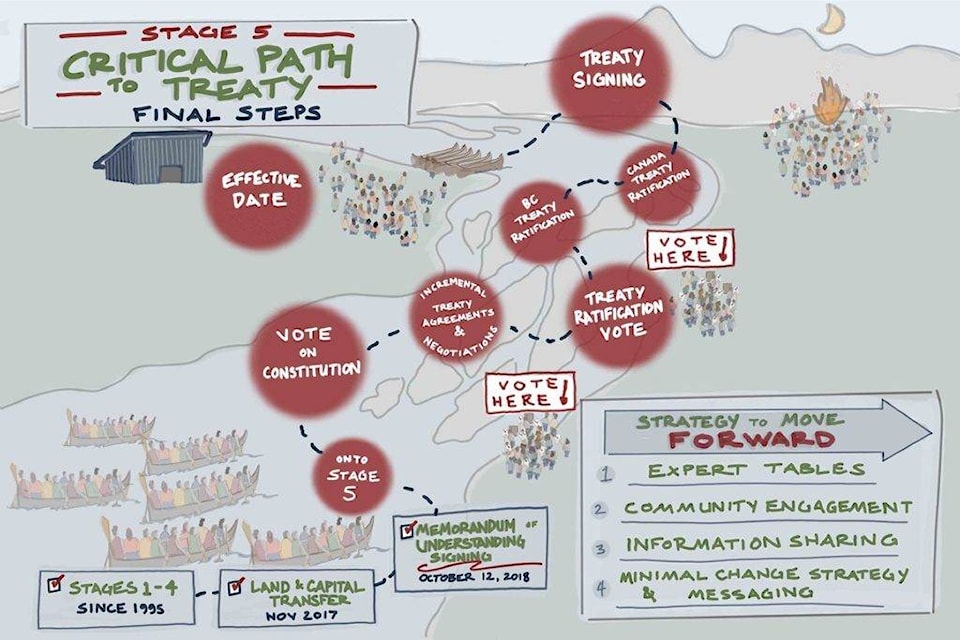Six Stó:lo communities are moving ever closer toward self-government.
The Stó:lo communities, including Leq’á:mel and Sq’ewá:lxw near Agassiz and Hope, will vote on the ratification of the Shxwelméxwelh of the Stó:lo Xwexwílmexw Treaty Association; “Shxwelméxwelh” is a word chosen for their constitution that means “our Stó:lo way.” Stó:lo spokesperson Heather Ramsay said the November vote marks a critical milestone for the six First Nations communities who have been working toward completing a treaty with Canada and the province for 25 years.
“If we get a ‘yes’ vote on the Constitution, then we will be taking a big step towards no longer being governed by the Indian Act,” said Siyémches Chief Terry Horne in a statement released September 28.
The Indian Act of 1876 brought many crucial aspects of First Nations life and culture under Canadian federal government control, including land, resources and education.
Voting opens online on November 4; online voting is the safest option when it comes to fighting COVID-19. Ballots will be mailed out to all members starting this week with community voting stations opening on November 13 and 14 from 10 a.m. to 6 p.m. at the Government House on Stó:lo Nation grounds, Tzeachten Social Health Building (6325 Matheson Road in Chilliwack) and Leq’á:mel Nation grounds. The results will be announced on November 15.
The Stó:lo Xwexwílmexw Treaty Association (SXTA) has opted for a step-by-step treaty negotiation process rather than negotating until they’ve reached a full and final agreement. Two years ago, they sign a memorandum of understanding to move into Stage 5 of the provincial treaty process.
RELATED: New rights-based approach to First Nations treaty-making rolled out
“Our treaty is like a living tree,” Chief Horne said. “It will adapt to changing circumstances, as policies evolve or new rights are established by the courts.”
The constitution going before the people next month as approved by SXTA leaders has been two years in the making. The document defines who they are, where they come from and how they will be governed once out from under the Indian Act. This Shxwelméxwelh (Constitution) would be the foundation of a new national government. The new national government would oversee such matters as health, social services and child and family services.
Should 50 per cent plus one per cent of a quorum of members vote yes, the six communities will re-assume the right to govern themselves. Following the adoption of the Shxwelméxwelh (Constitution), the six villages hope to adopt a self-government agreement with the province and Canada as part of the next steps toward a full treaty.
To see the Shxwelméxwelh (Constitution), visit the website www.sxta.bc.ca/constitution. The governance structure is described at www.sxta.bc.ca/constitution/governance. You can also obtain a copy of the Shxwelméxwelh (Constitution) by emailing outreach@sxta.bc.ca or calling 604-824-3281.
The six Stó:lō Xwexwílmexw communities consist of approximately 1,500 members throughout the Fraser Valley.
– With files from Jennifer Feinberg
